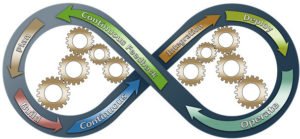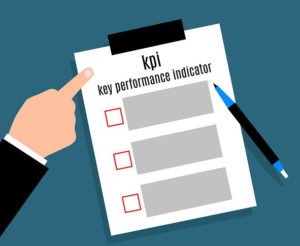A soccer team has a key goal, to win games. The coach of a soccer team has to best determine on how to achieve that goal on a consistent basis. In order to do that, he has to have a set of parameters on how he’s going to achieve that. He has to have tools, means and activities with which he can provide his players to perform to that desired goal. A soccer field, the organized team player trainings, individual trainings, helping staff, doctors, etc. All of the mentioned tools will be used by the coach to measure the effectiveness of those tools and their impact on the players’ performance. Each of the players will be evaluated by their performance and it’s the responsibility of the coach to set the individual player’s metric by which they will be evaluated. Why are Ronaldo or Messi one of the best players in the world? Because, going by the statistics and metrics, they have the most scored goals, assists, play time etc. Those metrics were achieved through the training and other tools and are the parameters by which they win the games with their performance.
Companies and businesses are essentially the same. Each company has a goal, be it financial or otherwise, and they have to have a performance based management system in place in order to achieve those goals. Let’s dive deeper and see how it all looks like from the business perspective.

What is performance management?
The definition is not much different than what was already said in the layman’s terms – it’s a set of tools, means and activities with which a company provides their employees to achieve their goal. We can mention again that the modern HR management is agile and strategic in terms of looking at the end goal of business financial status which means that all goals (not just financial) are set with the premise that the performance management system in place will be in line with the organizational goals. To put it more bluntly, the set of activities will be constructed specifically so those goals can be achieved. How does this work in practice and who is responsible?
The system is managed by both HR and the line managers of the departments. The responsibility of the HR is to make the tools (we will talk about the tools more in a different article) aforementioned above necessary and in place for managers to use/delegate/propagate. Once the line manager has the tools at his disposal, it’s their responsibility to put it in practice. They have to actively monitor the employees’ performance, give timely and wholesome feedback, determine if some employees need additional training or coaching, check for any developmental potential etc. All of the activities mentioned directly influence the business cost in the long run. But how do we measure this performance? How do we exactly know if we’re going in the right direction with employees?
Performance management measurement
A company has a clear picture on which direction to take in order to achieve their goals. The performance management system is set in stone and all seems to be functioning. Except for one thing – how do we measure that performance? We mentioned that the coach had various metrics which he used to determine which player performed well. Similarly, the line manager (or HR in some cases) sets the specific metrics called key performance indicators or in short KPIs for their team or individual employee to determine exactly how they perform. KPIs enable to organizations the ability to put goals into numbers, in other words, to quantify them. It’s an extension which provides a detailed report on how well the individual employee or the entire team performs with the purpose of achieving the end goal of the entire organization.
To set an example, let’s put a single KPI of a customer service call center to measure the total number of customers calling. The way to measure that is to put a limited time on a call in which an agent has to finish their call (and preferably help them). If a company has a lot customers calling and a lof them are waiting on the line, this is a good KPI to set because they have to monitor their time on call and try to reach as many customers as possible. It’s a KPI that directly correlates to customer satisfaction which is one of the end goals of a call center anyway.
The example above is a T part of the so called SMART KPIs. Each organization has to have in their best interest to set the KPIs which can be:
- Specific
- Measurable
- Achievable
- Realistic
- Timely
It’s a pretty clear picture which has to be painted in order for the goal to be reachable. SMART objectives have to be answered by organization’s mission and vision, various metrics, general benchmarks etc. Aside from the fact that KPIs measure individual and end goal performance, it can also be used to measure employees’ development. Many companies use it to determine when an employee is due for promotion or some sort of recognition, be it incentive or just general feedback overall. Not only that, but it also has a huge impact on their motivation. Combining the objectives set for the incentive, probability of a career development and the manager’s feedback, you will undoubtedly have a loyal employee.

Takeaway
The performance management system is one of the most important aspects of the modern HR. It is an imperative for companies to have it set in stone if they want to get most of the ROI in their business. It’s an overall good way to keep the business running smoothly and keeping the employees satisfied if you play your cards right.
